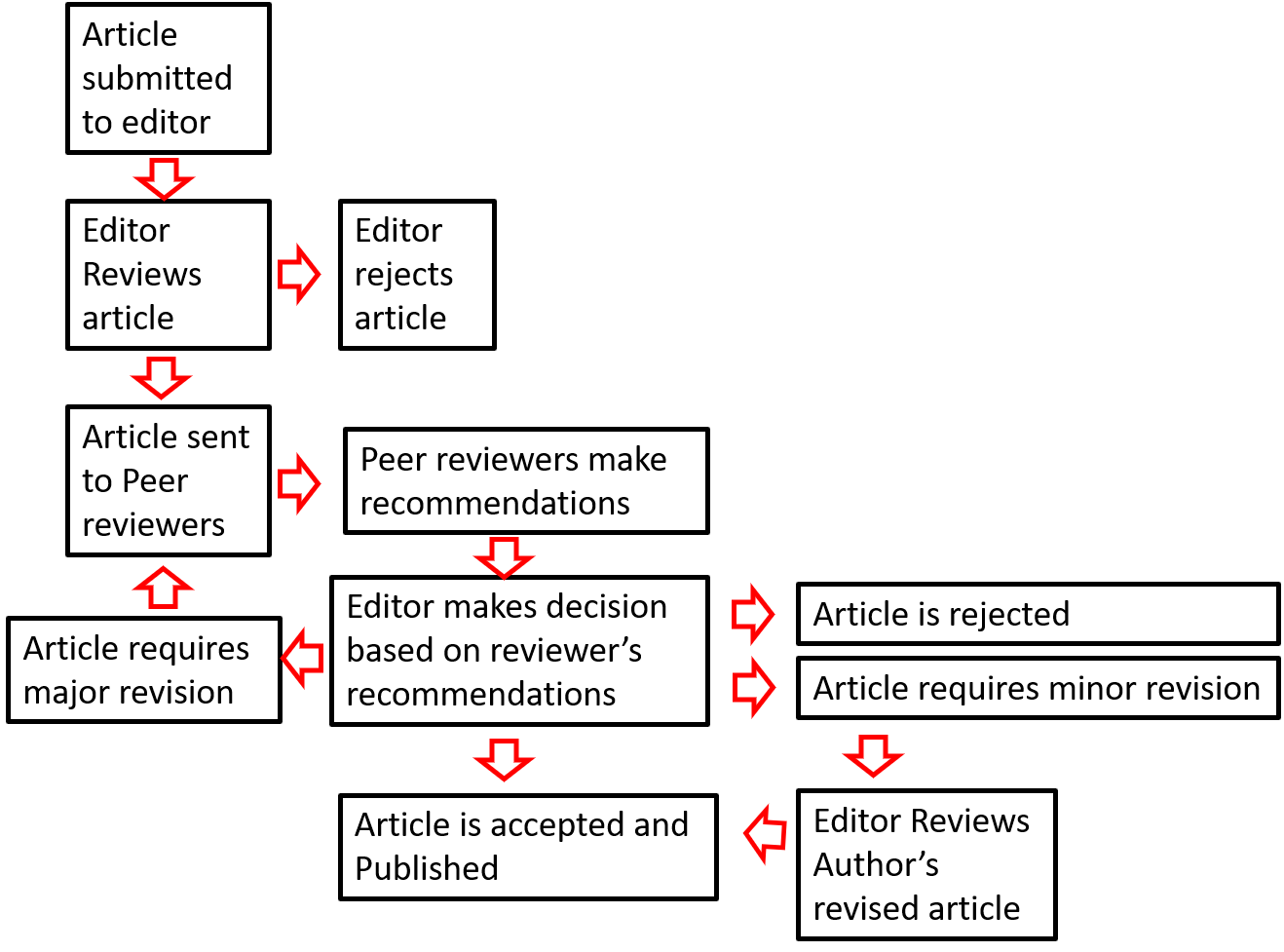Peer review is the process by which journals scrutinize and regulate the quality of content they publish, by inviting experts in the field to evaluate scholarly works and its objectives to ensure a high quality of published work.
- Manuscripts submitted to a journal first go through an initial screening by the editorial team.
- Those that clear the screening are sent to subject experts for peer review.
- Peer reviewers independently make a recommendation to the journal editor as to whether the manuscript should be rejected or accepted.
- The journal editor considers all the feedback from peer reviewers and makes an informed decision to accept or reject the manuscript.
There are three common types of peer review for journal publication:
-
Single blind: names of reviewers are not revealed to authors
Double blind: names of reviewers and authors are not revealed to each other
Open peer review: Names of authors and reviewers are revealed to each other
All the manuscripts submitted to The International Journal of Trendy Research in Engineering Technology (IJTRET) will be subjected to double blinded peer review process. IJTRET adheres to the Committee on Publication Ethics (COPE) Code of Conduct and Best Practice Guidelines (http://publicationethics.org). We ensure that peer review is fair, unbiased and timely. Decisions to accept or reject a manuscript for publication are based on the manuscript’s importance, originality and clarity, and the study’s validity and its relevance to the scope of the journal.


